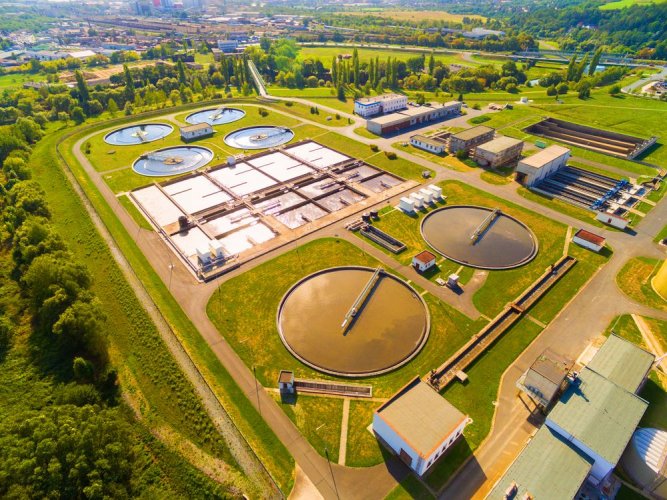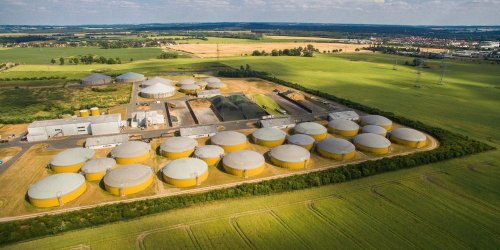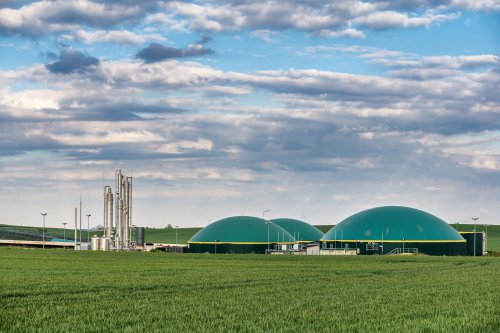Ukraine can produce 8 billion m3 of biogas per year, which will provide a quarter of the country's gas needs. The development of biomethane production is one of the ways of replacing gas and decarbonization, which Ukraine is actively pursuing together with the EU in the context of the global energy crisis and russia's energy terror.
Read more about the prospects of biogas in achieving energy independence and improving the state of the environment in the material of EcoPolitic.
As Oleksandr Dombrovskyi, the president of PJSC Eco Energy, noted, during the 30 years of independence, Ukraine spent about one year's GDP on natural gas imports. It is possible to reduce the import of energy resources due to the use of biogas.
Biogas is a type of biofuel that is produced during the microbiological decomposition of biomass or biowaste in sealed reactors. This process is called methane fermentation. Its result is a mixture of gases, in which methane predominates (from 55 to 75%). The rest is carbon dioxide and minor impurities of other gases.
The composition of biogas is identical to natural gas, but it can be inferior or superior to it in calorific value – depending on the method production and subsequent cleaning. The fundamental difference is in the method of production, because natural gas is extracted from the subsoil, and biogas – from biological waste or specially grown raw materials.
Thus, biogas is a renewable source of energy.
According to experts' calculations, the world's natural gas reserves will last another 50 years at the current rate of consumption. Therefore, biogas can be an equivalent alternative. Especially if you purify it to the state of "biomethane", with a methane concentration of 95-98%.
On August 2, 2022, the National Commission for state affairs regulation in the spheres of energy and communal services (NCRECS) adopted resolution about amendments to the Code of the gas transport system and Code of gas distribution systems, which will allow supplying biomethane to the network.
The resolution provides for an increase in the molar fraction of oxygen content in natural gas from 0.02 mol %:
- up to 0.2 mol % for access of biomethane to the gas transportation system;
- up to 1.0 mol % for access of biomethane to gas distribution systems.
Also, on July 22, 2022, the Government approved the Procedure for the operation of the biomethane register.
Impact on the environment
In the production of biogas from animal husbandry, food industry waste, wastewater and solid household waste, methane, which would otherwise be released into the atmosphere, is used for economic needs.
As you know, the greenhouse effect of methane is 21 times more powerful than the effect of carbon. That is why avoiding methane emissions contributes to the fight against global warming.
In addition, burning biogas causes less damage to the environment than coal. Therefore, replacing coal-fired thermal power plants with those that use biogas is one of the ways to combat climate change.
Also, biogas is obtained from specially grown raw materials, but in this case the fuel loses its ecological advantages. In addition, during the cultivation of energy crops, greenhouse gases are released, which is associated with the use of nitrogen fertilizers, soil and groundwater pollution with phosphate fertilizers, displacement of food crops.
Biogas plants that operate on specially grown agricultural raw materials are actively developing in Ukraine. After all, reactors operating on silos give a much higher gas output, which covers the costs of growing and harvesting energy raw materials.
In the EU countries, a norm was introduced, which provides that the share of corn as a substrate for biogas plants should not exceed 60%. So that biogas producers do not look for easy and not too green ways.
In Ukraine, only the use of raw materials from poultry farms can increase the production of biomethane several times more than the current total. However, this will require significant investments with a payback period of 4-5 years
As of 2020, Ukraine has already replaced approx 5.2 billion m3/year (15%) of natural gas as biomass. That is, 26 billion m3 of gas is consumed, while it could be 31 billion m3.
Energy crops can be grown on unproductive lands.
"By 2050, there will be practically no natural gas in the pipelines. Among the renewable gases, biomethane will occupy a powerful place. According to experts, biomethane will make up about 40% of the mix of renewable gases. And Ukraine can compete with any countries. We have the largest area of agricultural land and can offer the cheapest raw materials," said the chairman of the board of the Bioenergy Association of Ukraine George Geletukh.
Earlier, EcoPolitic wrote, that Minister of Energy Herman Galushchenko stated that the EU is interested in the development of Ukrainian renewable energy sources, in particular biomethane and hydrogen.
As EcoPolitic previously reported, the RGK explained why biomethane remains attractive even during war.





